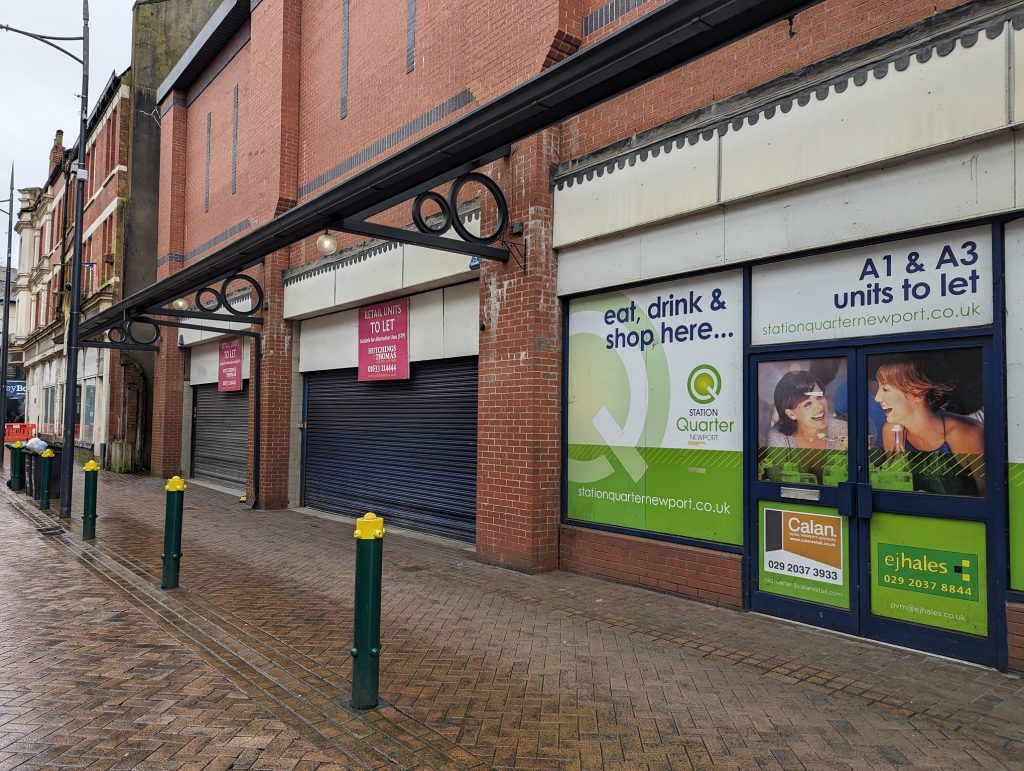THE REGENERATION of Newport city centre will “not happen overnight”, the council has warned as it prepares to launch a new strategy for the area’s long-term prosperity.
The local authority hopes a new placemaking plan, which will be devised following consultation with businesses and shoppers, will develop a “healthy mix” of residential, retail, hospitality and leisure activity in the city centre.
The challenges are plain to see – a visit to Newport’s shopping streets this week revealed more than 60 units that appeared to be empty or unused.
These included retail spaces in the two main shopping centres, as well as along Commercial Street.
A spokesperson for the city council told the Local Democracy Reporting Service (LDRS) “considerable progress” had been made on improving the fortunes of central Newport.
But the recent reports that Bar Amber and Tiny Rebel would be leaving High Street have shocked the city, with the latter warning the area was “slowly imploding”.

The city council has rejected that description of the situation, pointing out recent success stories such as the indoor market renovation and the opening of the Corn Exchange music venue.
It has also reached out to Tiny Rebel and offered to set up a meeting to discuss the brewer’s decision, the council spokesperson said – and the managers of the premises previously told the LDRS it had a “promising shortlist” of candidates to fill the premises.
The new placemaking plan, then, will look to develop central Newport not just for shopping but as somewhere that people can live and enjoy their spare time, according to the council’s “vision for the city centre as a place and destination for its residents, businesses, and visitors over the next 15 years”.

Addressing the number of empty units will surely be a priority – especially those premises which have fallen into disrepair.
An informal survey of the city centre by the LDRS on March 14 found dozens of units which were empty or appeared to not currently be in use.
These included at least 17 retail spaces in Commercial Street south of the junction with Charles Street, and another 14 north of that point.
One empty shop in that street had a sign in the window saying its occupier was vacating the premises in 2014.
A handful of units also appeared empty in each of Newport’s two shopping centres, and there were further empty spaces around Bridge Street, Cambrian Road, High Street and Skinner Street.

Asked about the issue of empty shops, the council acknowledged some businesses “close or move on” and outlined its support schemes, including a City of Newport business fund and special rates relief programmes for traders in the city centre.
Funding is also available to “revitalise vacant commercial space”, the council spokesperson added.
But the difficulty in tackling empty shops lies in the fact that “most of the city centre is privately owned, and the council cannot control market forces or the changing retail landscape”, they explained.
This is why the council will look at diversifying the city centre offer in its new placemaking plan, but it has warned that “regeneration does not happen overnight”.

“There is strong evidence that to ensure the long-term success of city and town centres, there must be a balance of leisure, residential, hospitality, business and retail,” the spokesperson said.
“There has been an increase in the number of people living in the city centre thanks to high-quality new living schemes and… projects such as the new leisure facility, flexible office and development spaces, and independent shopping, that will help cultivate this healthy mix in Newport.”

The council has already started consulting with businesses to find out what traders feel should be included in the plan, and soon it will be time for Newport residents to have their say.
The council spokesperson stressed it was “important that as many people as possible help shape the future of the city centre – because the council cannot do it on its own”.



















